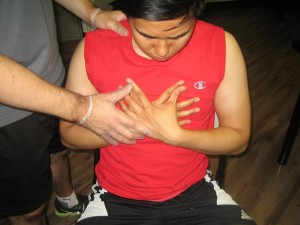Most cases of snake bites can cause similar symptoms. It is important to note that there are two types of snake bites – dry bites and venomous bites. A dry bite is when a snake does not inject venom while a venomous bite involves the injection venom. Remember that the effects of venomous bites might be quite severe among children since they are smaller in size.
Dry bites
The usual symptoms of a dry bite include anxiety and mild pain at the bite site due to the mechanical pressure by the fangs of the snake.
In case there are no other symptoms such as swelling, it is a dry bite. Nevertheless, it is still best to seek medical care by bringing the individual to the nearest emergency department. This is due to the fact that the signs that venom has been injected might not manifest later, usually up to 2 hours or more after a bite or even longer in other snakes.
Venomous bites

The indications of a venomous snake bite include the following:
- Diarrhea
- Intense pain at the bite site
- Redness, swelling and bruising at the bite site that radiates up to the affected limb
- Nausea that is followed by vomiting
- Itchy lumps on the skin
- Swollen tongue, lips and gums
- Erratic heartbeat
- Breathing difficulties with wheezing similar to asthma
- Dizziness, mental confusion or fainting
What happens during severe cases of venomous snake bites?
- There is extensive swelling, blistering and gangrene in the bite site.
- Paralysis that starts with drooping of the upper eyelids that progresses down the body that can lead to inability to breath, swallow or move.
- Shock and loss of consciousness
- Kidney failure with reduce or no urine being passed
- Massive blood loss due to bleeding from the nose, mouth and wounds as well as vomiting blood and passing out blood in the stool or urine.
- Death
Call for emergency assistance if an individual has been bitten by a possible poisonous snake and faints or develops the symptoms of a severe allergic reaction or anaphylaxis.
What is anaphylaxis?
In some individuals who sustained snake bites, it can trigger a severe allergic reaction called anaphylaxis. It is important to note that this reaction can occur right away after a bite or several hours later.
Anaphylaxis must be treated as a medical emergency. If not treated right away, anaphylaxis can be life-threatening.
Signs and symptoms of anaphylaxis
- Itchy skin with redness and hives
- Swollen lips, face, tongue and throat
- Wheezing and breathing difficulty
- Swelling in the throat that can lead to breathing difficulty
- Nausea, vomiting and diarrhea
- Rapid heart rate
Anaphylaxis can also lead to a drop in the blood pressure that can result to shock as well as trigger symptoms such as blindness, dizziness or mental confusion, clammy skin as well as faintness, collapse or loss of consciousness.
